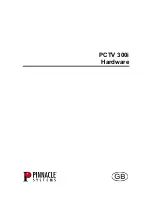
Service Modes, Error Codes, and Fault Finding
5.
•
Activate the SAM. The blinking front LED will show the
entire content of the LAYER 2 error buffer, this works in
“normal operation” mode.
5.6
Protections
5.6.1
Software Protections
Most of the protections and errors use either the standby
microprocessor or the SOC controller as detection device.
Since in these cases, checking of observers, polling of ADCs,
and filtering of input values are all heavily software based,
these protections are referred to as software protections.
There are several types of software related protections, solving
a variety of fault conditions:
•
Related to supplies: voltage presence needs to be
measured, no protection triggered here.
•
Protections related to breakdown of the safety check
mechanism. E.g. since the protection detections are done
by means of software, failing of the software will have to
initiate a protection mode since safety cannot be
guaranteed any more.
Remark on the Supply Errors
The detection of a supply dip or supply loss during the normal
playing of the set does not lead to a protection, but to a cold
reboot of the set. If the supply is still missing after the reboot,
the TV-set will go to protection.
Protections during Start-up
During TV start-up, some voltages and IC observers are
actively monitored to be able to optimise the start-up speed,
and to assure good operation of all components. If these
monitors do not respond in a defined way, this indicates a
malfunction of the system and leads to a protection. As the
observers are only used during start-up, they are described in
the start-up flow in detail (see section “
”).
5.7
Fault Finding and Repair Tips
Read also section “
,
5.7.1
AmbiLight
Due to the aging process of the LED’s fitted on the AmbiLight
module, there can be a difference in the colour and/or light
output of the spare AmbiLight modules in comparison with the
original ones.
Fine-tune the spare module via SAM => AmbiLight
(Brightness).
5.7.2
CSM
When CSM is activated and there is a USB stick connected to
the TV, the software will dump the complete CSM content to the
USB stick. The file (Csm.xml) will be saved under folder “CSM”
of the USB stick. If this mechanism works it can be concluded
that a large part of the operating system is already working
(SOC, USB...)
5.7.3
Power Supply Unit
For fault finding tips, refer to section
.
5.7.4
Logging
When something is wrong with the TV-set (f.i. the set is
rebooting) you can check for more information via the logging
in Hyperterminal.
Hyperterminal is available in every Windows application via
Programs > Accessories > Communications > Hyperterminal.
Apply settings in ComPair before starting to log:
1.
Start the ComPair application.
2.
Select the correct database (open file “QFUX.X”, this will
set the ComPair interface in the appropriate mode).
3.
Close ComPair.
4.
After start-up of the Hyperterminal, fill in a name (f.i.
“logging”) in the “Connection Description” box and apply
the following settings:
•
COMx,
•
Bits per second = 115200,
•
Data bits = 8,
•
Parity = none,
•
Stop bits = 1,
•
Flow control = none.
During the start-up of the TV-set, the logging will be displayed.
This is also the case during rebooting of the TV-set (the same
logging appears over and over).
Tip: when there is no picture available during rebooting you are
able to check for “error devices” in the logging (LAYER 2 error)
which can be very helpful to determine the failure cause of the
reboot. For protection state, there is no logging.
5.7.5
Guidelines Uart logging
Possible cases
When Uart loggings are displayed:
•
We can conclude that the TV-set is starting up and that
communication with the flash RAM seems to be supported.
The Marvell processor is able to read and write in the
DRAMs.
•
We can not yet conclude that flash RAM and DRAMs are
fully operational/reliable.There still can be errors in the data
transfers, DRAM errors, read/write speed and timing
control.
When Uart loggings report fault conditions, error messages,
error codes and fatal errors:
•
Some failures are indicated by error codes in the logging,
check with error codes table (see Table “
”).
•
I
2
C bus errors.
•
Not all failures or error messages should be interpreted as
fault. For instance the root cause can be due to wrong
option codes settings.
5.7.6
Loudspeakers
Make sure that the volume is set to minimum when the
speakers are disconnected while the TV is ON, because then
the audio amplifier might get damaged.
5.7.7
Power Supply
If there is no picture, during CSM (test pattern) is invoked and
no backlight supported, then it’s recommended to first check
the LED drivers on the power supply.
Attention: When (dis)connecting the power cable (power
supply <=> SSB), do not bend the cable or do not put
mechanical stress on the outside of the connector.
Wrong power cable handling might cause double pins inside
the connector.
5.7.8
Display option code
Attention: When replacing the SSB, always check the display
option code number (group 2, first option number e.g. “44855”)
in SAM, even when a picture is available.
Performance with incorrect display option code might lead to
unwanted side-effects in certain conditions.
Also supported in this chassis:
The display option code can be changed by special SAM
command 062598 HOME XXX (with XXX: display option in
three digits).
















































